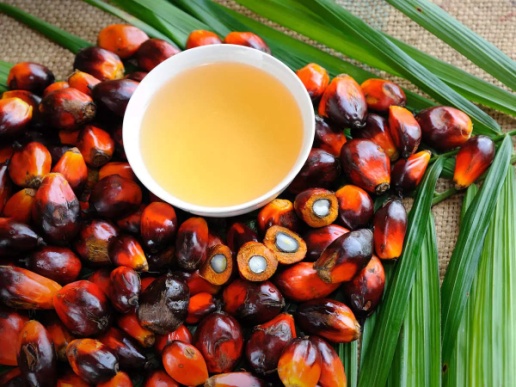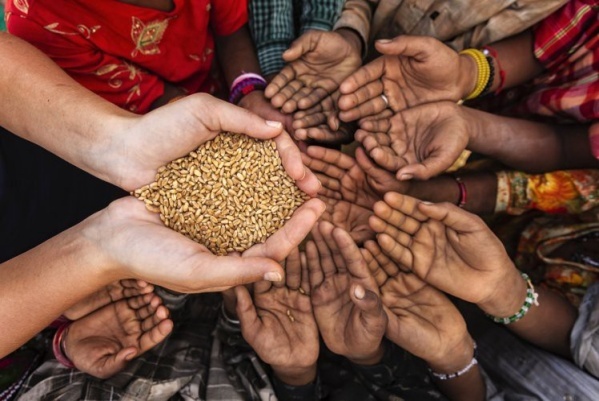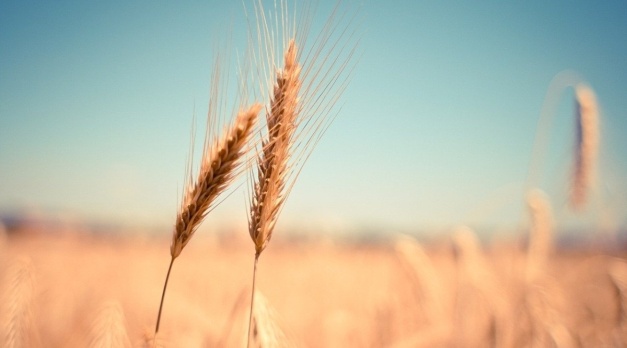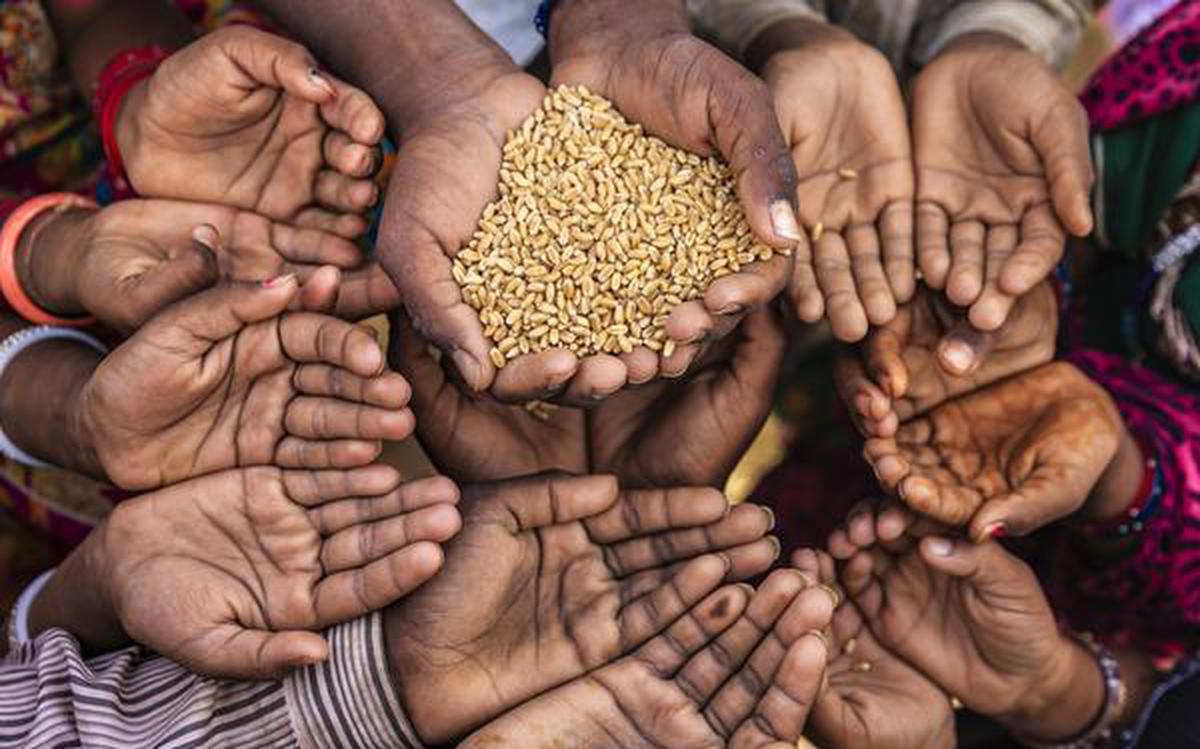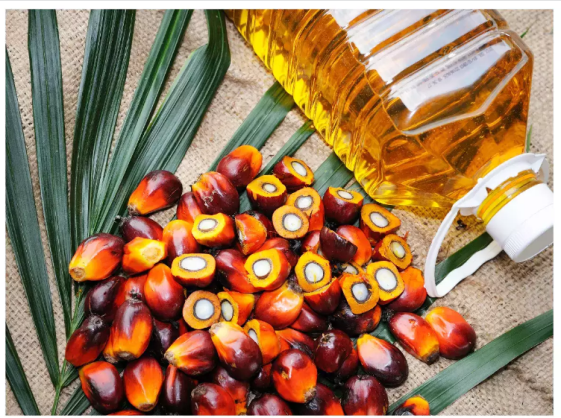Description
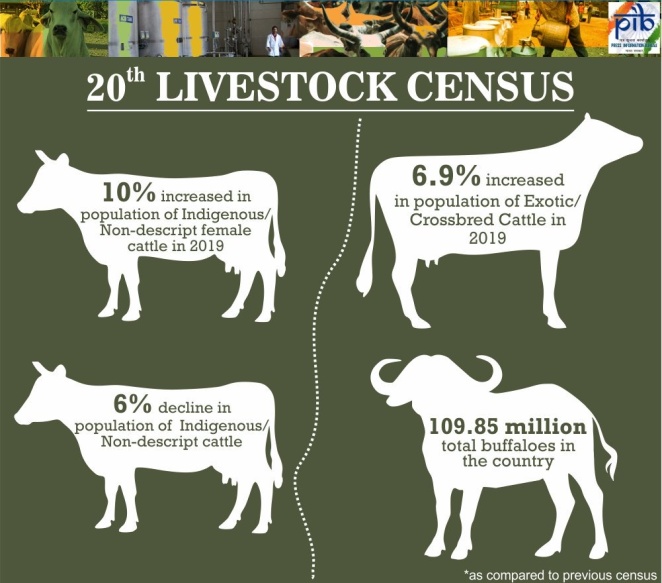
Disclaimer: Copyright infringement not intended.
Context
- Union Minister of Fisheries, Animal Husbandry and Dairying Shri Parshottam Rupala released the Breed-Wise Report of Livestock and Poultry based on 20th Livestock Census.
Details
- The breed-wise data collection was done along with 20th Livestock Census during the year 2019.
- It was for the first time in the country that breed wise data was collected by using tablet computers instead of paper mode which is indeed a unique attempt. The livestock as well as poultry birds were counted according to their breeds as recognized by National Bureau of Animal Genetic Resources (NBAGR).
- Importance: Considering the importance of Livestock Sector, it becomes essential for the policy maker and researcher to ascertain the various breeds of livestock species so that the livestock species can be genetically upgraded for optimum achievement for its product and also for other purposes.
Highlights of the Report
The major highlights of Breed-wise Report of Livestock and Poultry are summarised below:
- The report has covered 184 recognized indigenous/exotic & crossbred breeds of 19 selected species that are registered by the NBAGR (National Bureau of Animal Genetic Resources).
- There are 41 recognized indigenous whereas 4 exotic/crossbred breeds of cattle covered in this report.
- As per the report, the Exotic and Crossbred animal contribute nearly 26.5% of the total cattle population whereas 73.5% are Indigenous and Non-descript cattle.
- Crossbred Jersey has the highest share with 49.3% as compared to 39.3% of Crossbred Holstein Friesian (HF) in total Exotic/Crossbred cattle.
- Gir, Lakhimi and Sahiwal breeds have major contribution in total Indigenous Cattle.
- In Buffalo, the Murrah breed majorly contributes with 42.8% which is commonly found in UP and Rajasthan.
- In Sheep, there are 3 exotics and 26 indigenous breeds were found in the country. Among the pure exotic breeds, Corriedale breed majorly contributes with 17.3% and in the indigenous breeds the Nellore breed contribute the highest in the category with 20.0% share.
- In Goats, there are 28 indigenous breeds found in the country. The Black Bengal breed contributes the highest with 18.6%.
- In exotic/crossbred pigs, crossbred pig contributes 86.6% whereas Yorkshire contributes majorly with 8.4%. In indigenous pigs, Doom breed major contributes with 3.9%.
- In Horse & Ponies, the share of Marwari breed majorly contributes with 9.8%.
- In Donkeys, the share of Spiti breed contributes with 8.3%.
- In Camel, Bikaneri breed majorly contributes with 29.6%.
- In Poultry, desi fowl, Aseel breed majorly contribute in both backyard poultry and commercial poultry farm.
What is the livestock census?
- Under the livestock census, various species of animals possessed by households, household enterprises or non-household enterprises and institutions are counted at site — both in rural and urban areas.
- In other words, it covers all domesticated animals in a given period of time. India has been conducting livestock censuses periodically since 1919-20.
- The census usually covers all domesticated animals and head counts of these animals are taken.
- So far, 19 Livestock Censuses were conducted in participation with State Governments and UT Administrations. The 20th Livestock Census was launched during the month of October, 2018. The last livestock census was conducted in 2012.
- The Livestock Census is the main source of such data in the country.
20th Livestock Census
- 20th Livestock Census was designed to capture Breed-wise number of animals and poultry birds.
- Various species of animals (cattle, buffalo, mithun, yak, sheep, goat, pig, horse, pony, mule, donkey, camel, dog, rabbit and elephant)/poultry birds (fowl, duck and other poultry birds) possessed by the households, household enterprises/non-household enterprises were counted.
- For the first time, livestock data were collected online in 20th Livestock Census. Advance technology has been adopted to collect data through tablet computers. The National Informatics Centre, Ministry of Electronics & IT developed Android based mobile application for data collection with various features such as data entry module to facilitate recording the data on tablets, web-based work application, local government directory codes etc.
The Animal Husbandry Departments of States/UTs were entrusted to conduct the field operations.
Results of the 20th Livestock Census
The following are the key results of the 20th Livestock Census:
- The total Livestock population is 78million in the country showing an increase of 4.6% over Livestock Census-2012
- Total Bovine population (Cattle, Buffalo, Mithun and Yak) is 79 Millionin 2019 which shows an increase of about 1% over the previous census.
- The total number of cattle in the country in 2019 is 49 millionshowing an increase of 0.8 % over previous Census.
- The Female Cattle (Cows population) is 12 million, increased by 18.0%over the previous census (2012).
- The Exotic/Crossbred and Indigenous/Non-descript Cattle population in the country is 42 millionand 142.11 million respectively.
- The Indigenous/Non-descript female cattle population has increased by 10%in 2019 as compared to previous census.
- The population of the total Exotic/Crossbred Cattle has increased by 9 %in 2019 as compared to previous census.
- There is a decline of 6 % in the total Indigenous/ Non-descript cattle population over the previous census. However, the pace of decline of Indigenous/ Non-descript cattle population during 2012-2019 is much lesser than as compared to the 2007-12 which was about 9%.
- The total buffaloes in the country are 85 millionshowing an increase of about 1.0% over previous Census.
- The total milch animals (in-milk and dry) in cows and buffaloes are 34 million, an increase of 6.0 %over the previous census.
- The total sheep in the country is 26 millionin 2019, increased by 14.1% over previous Census.
- The Goat population in the country in 2019 is 88 million showing an increase of 10.1%over the previous census.
- The total number of Pigs in the country is 06 Million in the current Census, declined by 12.03%over the previous Census.
- The other livestock including mithun, yak, horses, ponies, mule, donkeys, camel together contribute around 0.23% of the total livestock and their total count is 24 million.
- The total poultry in the country is 81 million in 2019,registered an increase of 16.8% in the total poultry.
- The total birds in the backyard poultry in the country is 07 million. The backyard poultry has increased by around 46%as compared to previous Census.
- The total Commercial Poultry in the country is 74 millionin 2019, increased by 4.5% over previous Census.

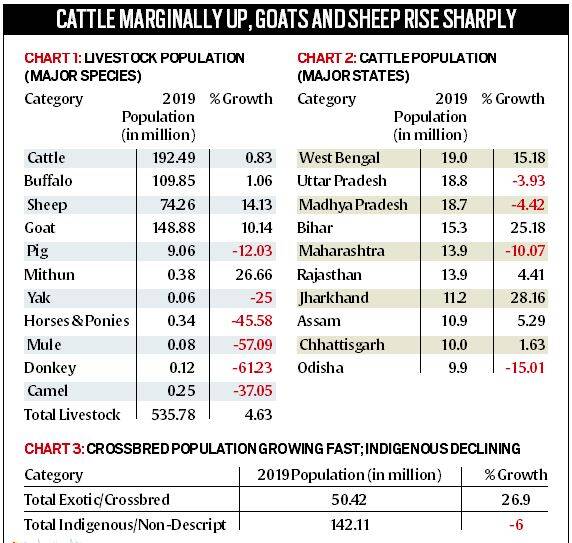
Population trends for different kinds of cattle
- While the overall cattle population has increased by 0.8 per cent between 2012-19, the population of indigenous cattle has come down by 6 per cent — from 151 million to 142.11 million. However, this pace of decline is much slower than the 9 per cent decline between 2007 and 2012.
- In contrast, the population of the total exotic/crossbred cattle has increased by almost 27 per cent to 50.42 million in 2019.
Eastward shift of cattle
- West Bengal emerged as the state with the largest number of cattle in 2019, followed by Uttar Pradesh, and Madhya Pradesh. In 2012, Uttar Pradesh had the largest number of cattle but this population has come down by almost 4 per cent since.
- The cattle population is also down in Madhya Pradesh (4.42%), Maharashtra (10.07%) and Odisha (15.01%).
- States that registered the maximum increases between 2012 and 2019 were West Bengal (15.18%), Bihar (25.18%) and Jharkhand (28.16%).
Implications of the decline in the numbers of indigenous cattle
- Due to continuous fall in productivity, indigenous breeds of cattle have become liabilities for farmers, forcing them to desert the unproductive cows.
- Farmers find other animals such as buffaloes, goats and sheep much more productive. Unlike cows, if these animals become unproductive, they can be sold and slaughtered for further processing.
- Experts believe this could have long term health and environmental impacts because the milk of indigenous breed has higher nutritional value than that of crossbreeds. Moreover, there is a danger of losing these indigenous breeds, which have been developed and sustained by generations from time immemorial.
What are the trends in the population of livestock other than cattle?
- The total population of buffaloes in the country has gone up from 108.70 million in 2012 to 109.85 million in 2019.
- States which have seen a rise in the buffalo population during this period include Uttar Pradesh, Rajasthan, Gujarat, Madhya Pradesh, Bihar, Maharashtra and Telangana. However, some states including Andhra Pradesh, Haryana and Punjab have seen a decline in their respective buffalo populations.
- In 2019, the total poultry in the country is 851.81 million — of which, 317.07 million are backyard poultry and 534.74 million are commercial poultry.
- While the total poultry has registered an increase of 16.8 per cent over the previous census, the backyard poultry has increased by around 46 per cent and commercial poultry by just 4.5 per cent.
- Tamil Nadu is the leading state in poultry population followed by Andhra Pradesh, Telangana, West Bengal, Maharashtra, Karnataka, Assam, Haryana, Kerala and Odisha. Assam had registered the largest (71.63%) growth in poultry population.
https://www.pib.gov.in/PressReleasePage.aspx?PRID=1824647









